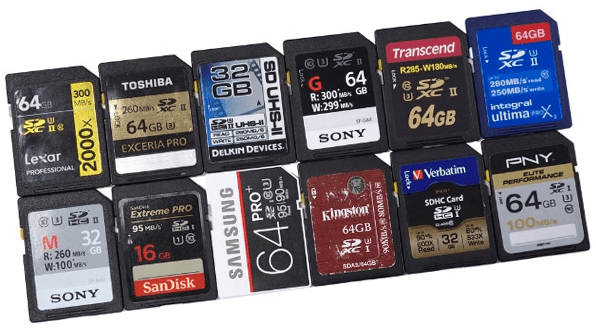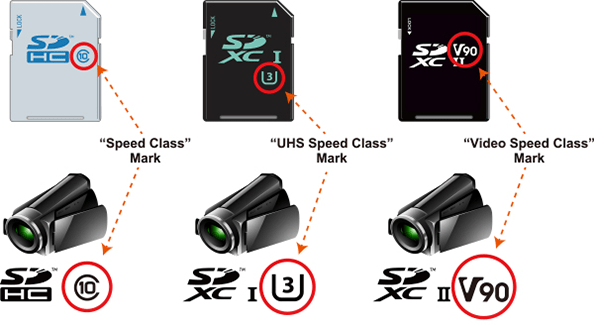
Figure 1: SD memory cards.
A memory cards is an electronic data storage device used for storing digital information, typically using flash memory. It is an independent storage medium used in mobile phones, digital cameras, portable computers, MP3 and other digital products. It is generally in the form of a card, so it is called a "memory card".
Common types of memory cards include: Secure Digital (SD/SDHC/SDXC), MicroSD (and MicroSDHC/SDXC), Compact Flash (CF), XQD, Memory Stick (Memory Stick Duo, Memory Stick ProDuo, Memory Stick Pro-HG), xD Photo Card, Micro Drive, Multi Media Card (MMC), Smart Media. But the main types are: MicroSD, SD, XQD, CompactFlash.
1. The Working Principles of Memory Card
Since there are many types of memory cards, we take the SD card as an example to explain the working principles of memory cards.
The work of SD card includes two steps:
The first step is the identification process of the SD card.
The second step is the process of reading and writing the SD card, that is, the process of data transmission between the host controller and the SD card.
To make the SD card work normally, the first is to supply a stable voltage to the SD card, and the second is to make the SD card work in the way specified by the user. The realization of these two tasks is realized by the host controller’s sending control commands to the SD card.

Figure 2: Memory cards of different brands.
To drive the SD card, the host (SDIO controller) uses many commands, including the application layer command ACMD and the general command CMD. The host sends commands to the SD card, and the SD card responds. The response here is called response, and the response command is divided into 6 categories, namely R1, R1b, R2, R3, R6, R7.
After the host sends a command to the SD card, the SD card will respond with the data required by the host, including SD information, capacity, and storage data and so on.
In a nutshell, the SD card works mainly for identification and data transmission. And its identification process is somewhat complicated.
2. The Speed Classes of SD Cards
Different manufacturers mark the speed of memory cards in different ways. To facilitate the manufacturing and purchasing of memory cards, there are defined speed class for memory cards. For example, the SD Association has defined the speed of SD cards.

Figure 3: Three speed classes of memory cards.
2.1 Speed Class
Speed Class includes C10, C6, C4, and C2. C2 has a minimum write speed of 2MB/s, C4 4MB/s, C6 6MB/s, and C10 10MB/s.
2.2 UHS
Ultra High Speed (UHS) is a new bus mode. There are currently three versions: UHS-, UHS-I, and UHS-II. Achieving UHS standard transmission speed requires device support. Higher versions are backward compatible with lower versions. If the device does not support the standard, the memory card can be down-speeded to a normal memory card.
In daily life, we use U1 (minimum write speed 10M/S) and U3 (minimum write speed 30M/S). Regarding the maximum reading speed, the UHS-H card is 104M/S, the UHS-I card 312M/S, and the UHS-III card reaches 624M/S.
2.3 VSC
After the demand for 4K video shooting has increased, the SD Association has formulated a Video Speed Class (VSC) for video shooting applications. The identification letter V plus the number of the minimum writing speed value constitute the speed mark, that is, the minimum writing speed of V10 is 10M/S, and V30 is 30M/S.
Related Info
How to Calculate the Service Life for Linear GuidewaysHow to Deal with the Abnormal Noises from the Linear Guideways?
Differences between Rolling and Sliding Linear Guideways
How to Maintain a Linear Guideway?
The Lubrication of the Linear Guideway


